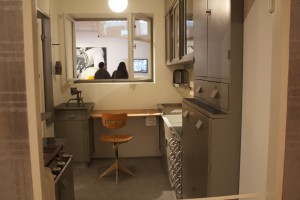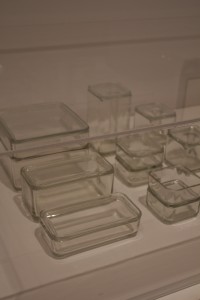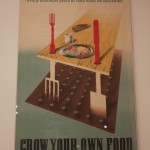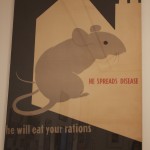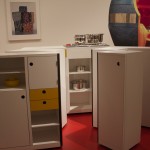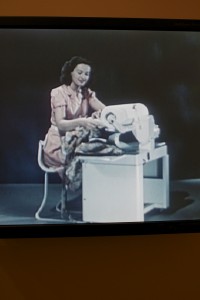
|
MOMA exhibit “Counter Space: Design and the Modern Kitchen” Last Saturday I gathered with members of the women’s culinary alliance at the Museum of Modern Art to view the exhibit “Counter Space: Design and the Modern Kitchen. ”. At the first beginning of the exhibit the placard reads: ” Following World war I, kitchens, long ignored by deign professionals, began to attract unprecedented attention from domestic reformers, progressive architects, manufacturers, and utility suppliers, all intent on transforming spaces that were previously drab, unsanitary, and hidden from view.” Kitchen design evolved with the availability of gas and electricity, with the rise of cities, and the emergence of modern design itself. The centerpiece of the first part of the exhibit “The New Kitchen,” was a recently acquired Frankfurt Kitchen, designed in the mid 1920’s by one of Austria’s first female architects, Margarete Schutte-Lihotzky. World War I and inflation had precipitated housing shortages in major European cities and 10,000 such inexpensive “model of efficiency” kitchens were produced for new public housing developments. On the wall, one can read a quotation from Schutte-Lihotzky that illustrated her attitude:“ I’d never run a household before designing the Frankfurt Kitchen, I’d never cooked, and had no idea about cooking,” Before designing the kitchen, Schutte-Lihotzky conducted detailed time-motion studies and interviewed housewives and woman’s groups. Each kitchen come complete with a swivel stool, a gas stove, built-in storage, fold-down ironing board, an adjustable ceiling light, removable garbage drawer, and labeled aluminum storage bins. Notable in the Frankfurt kitchen was the conspicuous lack of an ice box, the tiny size of the oven, the lack of counter space, and the depressing industrial grey color. Furthermore, these kitchens dispelled with the notion of kitchen as hearth or gathering place. I found this kitchen both interesting and horrifying. Highlights of the exhibit include a treasure trove of design objects from the 1930’s, including the classic Wilhelm Wagenfeld’s Kubus stacking storage containers made of textured glass. A fascinating array of posters from wartime Britain included, among others, one on growing your own food, and several on the destructiveness of mice. In “Visions of Plenty,” the second part of the show, there is an Italian-designed mobile kitchen unit from 1968 that folds up into a minimalist cube. Promotional films displayed in the exhibit are amusing vignettes into bygone eras. I was fascinated by a film piece promoting a device called the “iron-rite,” a ridiculous contraption that apparently didn’t quite catch on. The last part of the exhibit, “Kitchen Sink Dramas,” centered on the kitchen as inspiration for artists. The show is at the MOMA through March 14th. Share on Facebook and Twitter | Happenings/Events | No comments
Leave a Reply
|
